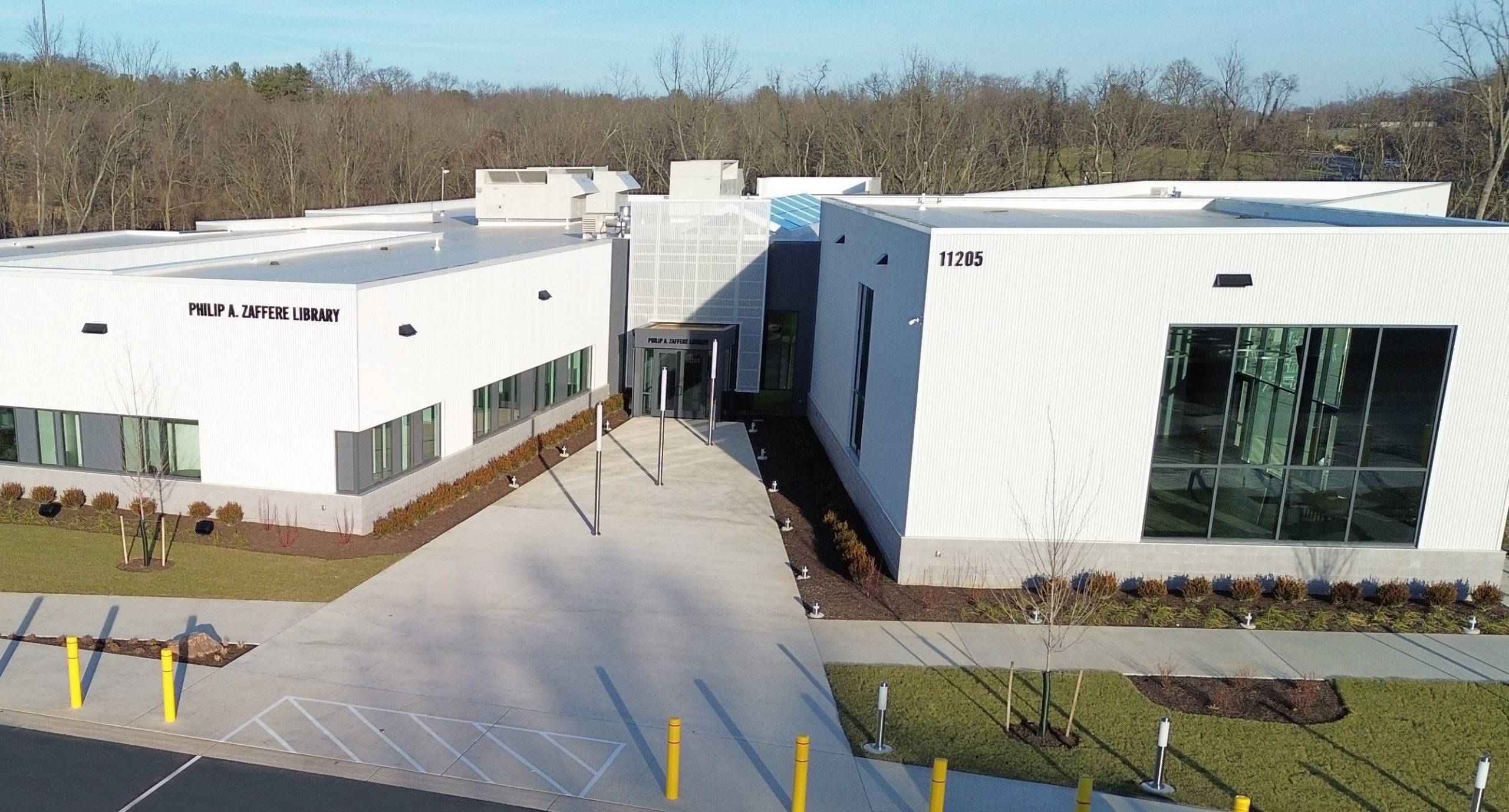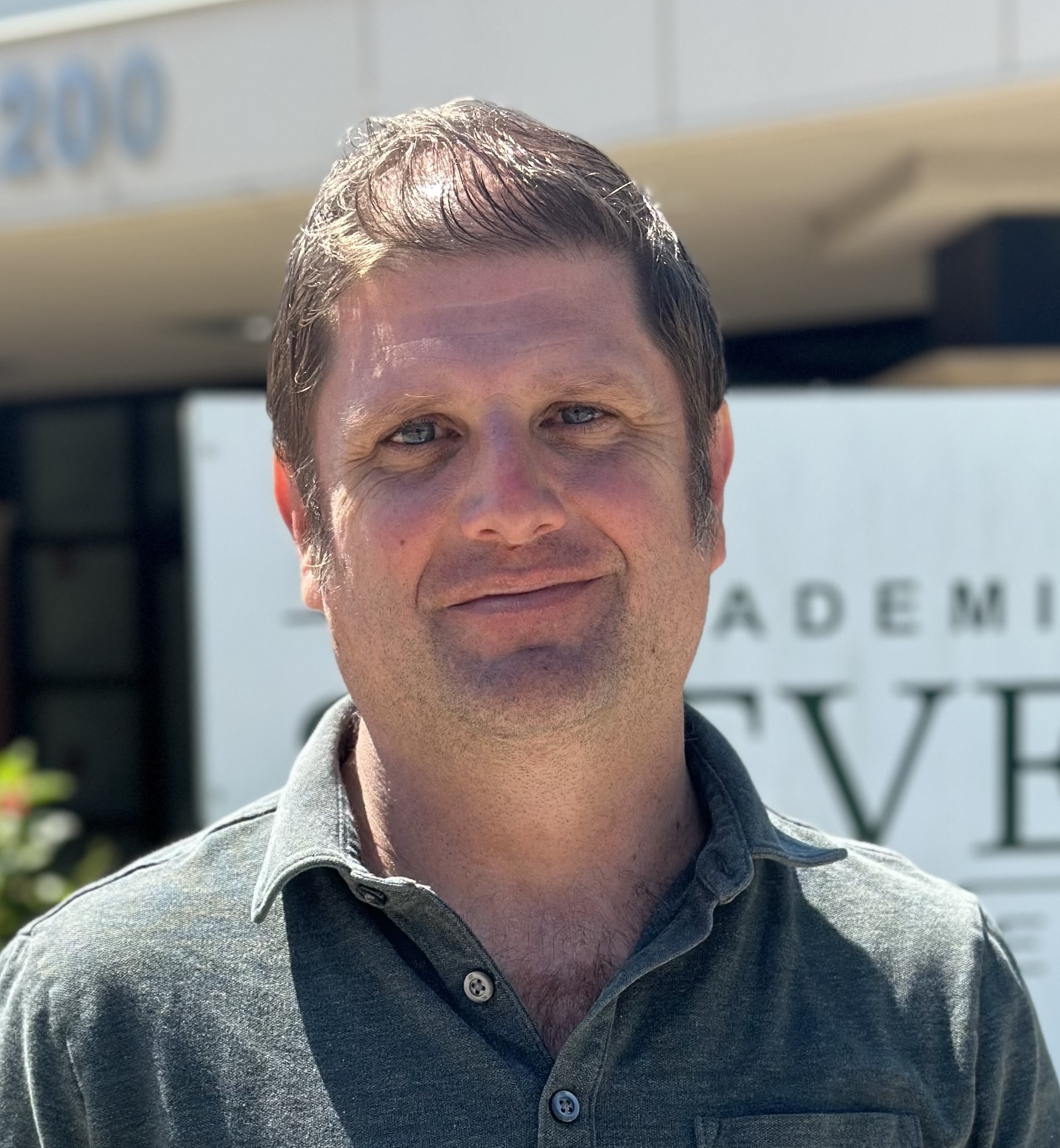Frank Stearns Ph.D.
Education
- Post-Doctoral Fellow Johns Hopkins University, Chemical and Biomolecular Engineering (2018)
- Ph.D. University of Maryland College Park, Biology (2015)
- M.S. University of Delaware, Entomology and Applied Ecology (2004)
- B.S. Washington and Lee University, Biology (2000)
Professional Experience
- Stevenson University Assistant Professor, Biological Sciences 2022-Present
- The George Washington University Visiting Professor, The Honors Program 2021-2022
- Notre Dame of Maryland University Adjunct Professor, Biological Sciences 2019-2021
- The George Washington University Course by Course Faculty, The University Writing Program 2019-2020
- University of Maryland College Park Faculty Assistant, Biological Sciences 2019
Research
My research focuses on molecular evolution and ecological genetics. I am primarily interested in speciation, adaptation genetics, and mutation dynamics. My previous studies have involved laboratory research, manipulative field experiments, and computational approaches. I am more interested in concepts than organisms, and I have worked with plants, insects, and bacteria. I typically take mathematical models and test them under experimental conditions.
Current interests include using a candidate gene approach to study restricted dispersal and philopatry in the cryptic insect species complex Enchenopa binotata, testing predictions from adaptive landscape models in plants, and investigating the qualitative predictability of phenotypic noise and its role in adaptation.
I am also involved with the SEA-Phages program for Intro Biology 113. This engages students in authentic research experiences discovery novel bacteriophage. I am interested in pursuing research into phage host diversity, applying my previous work with host plant shifts in phytophagous insects to investigating when phage shift to novel bacterial hosts and diverge vs extending their host range. This initiative will help inform attempts to use phage therapy as an alternative to antibiotics as a way to mitigate the increasing problem of antibiotic resistance.
All of my projects can be completed in one or two academic years, and I encourage my students to submit small grants, present at local conferences, and to work towards producing results to be published in the scientific literature.
Publications
- Stearns, F. W., J. Zhou, and C. B. Fenster. The role of phenotypic noise in adaptation to climate. (In prep).
- Rodríguez, R. L., T. K. Wood, F. W. Stearns, R. L. Snyder, K. J. Tilmon, M. Cast, R. E. Hunt, and R. B. Cocroft. Adaptation and signal divergence occur in parallel. American Naturalist (in revision).
- Rodríguez, R. L., T. K. Wood, F. W. Stearns, R. L. Snyder, K. J. Tilmon, M. Cast, R. E. Hunt, and R. B.
- Cocroft. 2021. Adaptation without specialization early in a host shift. American Naturalist 198:333-346.
- Mehlhoff, J. D., F. W. Stearns, D. Rohm, B. Wang, E.-Y. Tsou, N. Dutta, M.-H. Hsiao, C. E. Gonzalez, A. F. Rubin, and M. Ostermeier. 2020. Collateral fitness effects of mutations. Proceedings of the National Academy of Sciences 117:11597-11607.
- Stearns, F. W. and C. B. Fenster. 2016b. The effect of induced mutations on quantitative traits in Arabidopsis thaliana: Natural versus artificial conditions. Ecology & Evolution 6:8366-8374
- Stearns, F. W. and C. B. Fenster. 2016a. Fisher’s Geometric Model Predicts the Effects of Random Mutations When Tested in the Wild. Evolution 70:495-501.
- Stearns, F. W., K. J. Tilmon, and T. K. Wood. 2013. Felsenstein’s “one-allele model” of speciation: The role of philopatry in the initial stages of host plant mediated reproductive isolation in Enchenopa binotata. Current Zoology 59:658-666.
- Stearns, F. W. and C. B. Fenster. 2013. Evidence for parallel adaptation to climate across the natural range of Arabidopsis thaliana. Ecology & Evolution 3:22412250.
- Stearns, F. W. 2010. One Hundred Years of Pleiotropy: A Retrospective. Genetics 186:767-773.
- Stearns, F. W., S. Boles, H. Hurston, T. Vo, D. Butler, W. Shuham and T. E. Juenger. 2008. Identification of nuclear microsatellite loci for Ipomopsis aggregata and the distribution of pairwise relatedness in natural populations. Molecular Ecology Resources 8:437-439.
- Knox, J. S., F. W. Stearns, and C. K. Dietzel. 1999. Factors controlling the distribution and abundance of the narrow endemic, Helenium virginicum (Asteraceae): Antiherbivore Defense? Banisteria 13:95-99.
Teaching
- BIO113L – General Biology I: Cell Biology and Genetics Lab
- BIO113HL – General Biology I: Cell Biology and Genetics Lab (Honors)
- BIO315 – Evolution
- BIO230 – Genetics (Lecture and Lab)
- BIO310 – Cell Biology
- BIO330 – Molecular Genetics (Lecture and Lab)
Highlights
Projects and Funding
- Washington Biologists’ Field Club Grant. Using a candidate gene approach to identify speciation genes in the insect Enchenopa binotata. 2023.
Recent Presentations
- R. Rodriguez, T. Wood, F. Stearns, R. Snyder, K. Tilmon, M. Cast, R. Hunt, & R. Cocroft. Ecological adaptation and signal plasticity in an experimental host-plant shift. Animal Behavior Society Meetings, University of Missouri Columbia. 2016.
- F. Stearns & C. Fenster. The role of induced mutations as steps toward a Fisherian optimum in Arabidopsis thaliana under field conditions. Evolution Meetings, North Carolina State University. 2014
- F. Stearns & C. Fenster. Evidence for parallel adaptation to climate across the natural range of Arabidopsis thaliana. Mid-Atlantic Ecological Society of America Meetings, University of Maryland College Park. 2014.
- F. Stearns & C. Fenster. Evidence for parallel adaptation to climate across the natural range of Arabidopsis thaliana (Poster). American Genetic Association Meetings, Cornell University. 2013.
Invited Presentations
- Stearns, F. Speciation in the Enchenopa binotata treehopper: The role of philopatry. Tri Beta Biology Honor Society Seminar Series. McDaniel College. Westminster, MD. 2013.
- Stearns, F. Moving toward an optimum: Mutations as an evolutionary force. Departmental Seminar. SUNY Potsdam. Potsdam, NY. 2009.
Popular Writing
- Stearns, F. “Mayflies and the origin of parthenogenesis” American Genetic Association Blog (https://blog.theaga.org/mayflies-and-the-origin-of-parthenogenesis/). 2021.
- Stearns, F. “Marching Beetles – Dispersal and Epistasis” American Genetic Association Blog (https://blog.theaga.org/marching-beetles-dispersal-and-epistasis/). 2021.
- Stearns, F. “Nobel Prize Winners Jennifer Doudna and Emmanuelle Charpentier, and Other ‘Hidden Figures’ Of Genetics” Ms. Magazine (https://msmagazine.com/2020/12/08/nobel-prize-chemistry-jennifer-doudna-emmanuelle-charpentier-hidden-figures-genetics/) . 2020.
- Stearns, F. “Haemophilus influenzae, Restriction Enzymes, and Genome Sequencing.” American Genetic Association Blog (https://blog.theaga.org/haemophilus-influenzae-restriction-enzymes-and-genome-sequencing/). 2020.
DISCLAIMER: The content of this faculty profile page was created, authored, and published by the identified faculty member. Stevenson University (SU) makes absolutely no guarantee as to the currency, accuracy, or quality of information published. The views and opinions expressed on this page or any links made available are strictly those of the author and do not necessarily state or reflect those of SU. The content of this profile page has not been reviewed or approved by Stevenson University.






